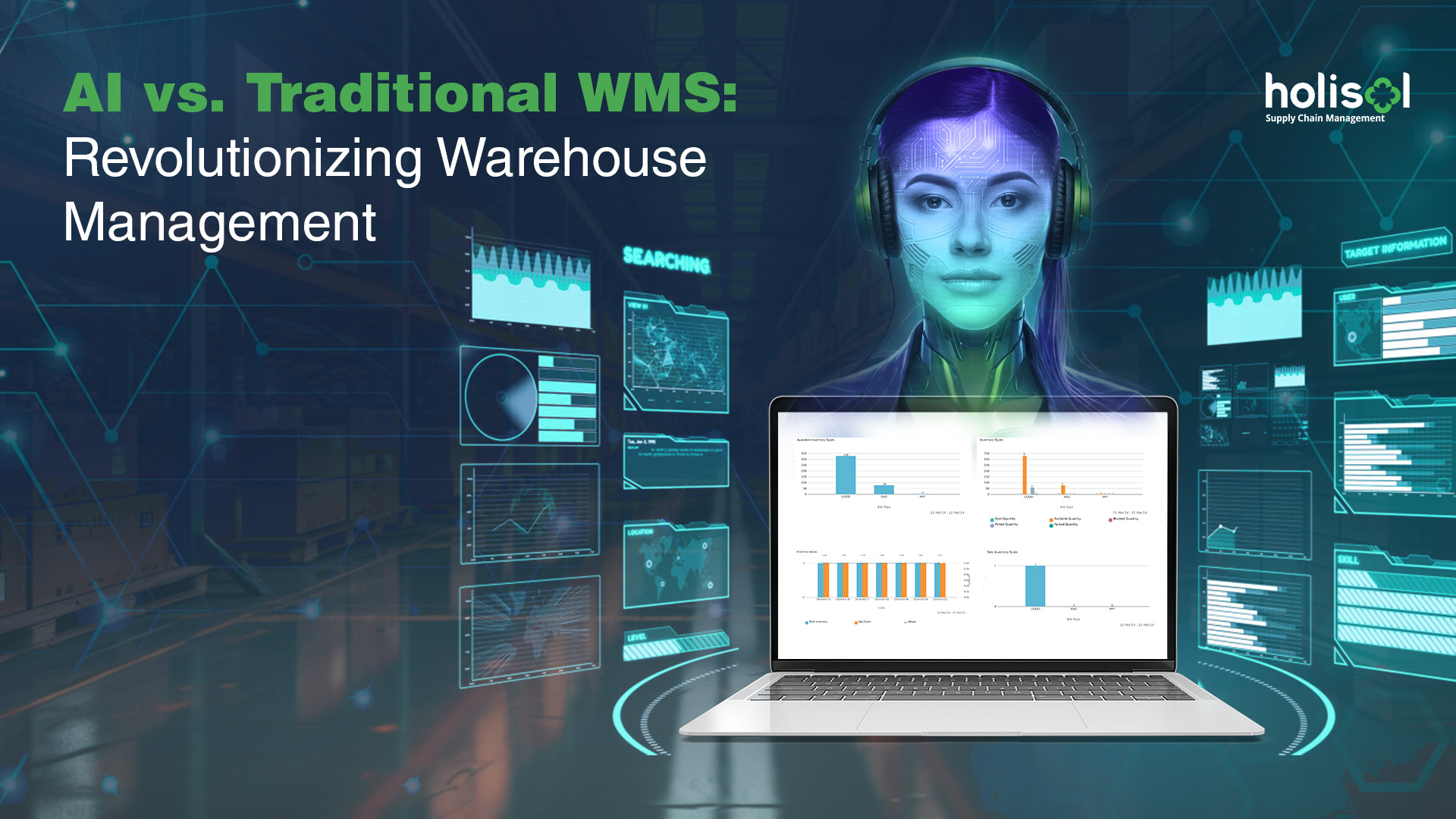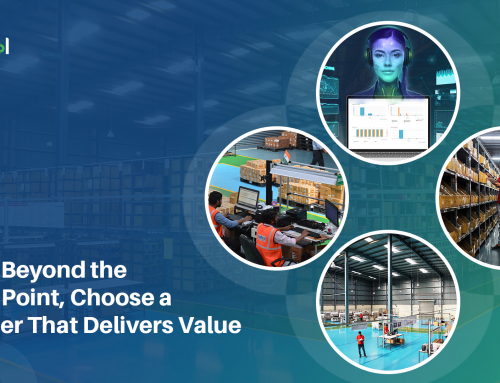The buzz around AI is too loud to ignore these days. Everywhere we look, AI is changing how we find information and giving a serious upgrade to the old-school ways of doing things. This is super true for warehouse management as well where the leap from digitization to AI-enhanced processes offers a competitive edge and that’s becoming essential.
The way people shop and what they expect from brands is changing fast. The consumers aren’t just tech-savvy; they want things quick, transparent, and to be blown away by their experiences. To keep pace with these high expectations, brands have to adapt to stay in the lead and keep customers loyal. This drive towards doing things better and smarter is where Artificial Intelligence (AI) steps in, promising to shake things up in how warehouses and their data are managed.
But here’s the thing: Should every business rush to embrace AI, or should there be a bit more thought on what’s the best fit for each operation?
Let’s break down the traditional vs. AI-enhanced WMS to help you figure out the best fit for your biz. Here’s the lowdown on what sets them apart:
Functionality:
AI/BI-Enabled: Think of it as having a super-smart buddy in your warehouse. It’s all about automation, getting ahead of problems before they happen, and making things run smoother and smarter. The star of the show? The AI Digital Assistant with automated control tower capabilities. It’s like having an automated genius running the show, spotting issues before they blow up, and keeping everything on track without breaking a sweat.
Traditional: Picture this as your reliable warehouse helper, turning all those manual tasks digital. It’s like having a digital helper that keeps things tidy, tracks your stuff, and makes sure orders zip through the process. You’ll see fewer mix-ups and get your hands on info way faster. But it’s a bit of a one-trick pony – great at following orders but not so hot on making smart decisions on its own.
Data and Analytics:
AI/BI-Enabled: Utilizes machine learning, big data, and deep learning to provide actionable insights and foresight into inventory management, setting a new standard for data utilization in warehousing.
Traditional: Depends on historical data, offering basic reporting without predictive capabilities.
Scalability and Flexibility:
AI/BI-Enabled WMS: Ever wish your warehouse could pivot as quickly as market trends do? That’s where AI-powered WMS shines. They’re like your warehouse’s personal trainer, prepping it to flex and scale up or down effortlessly, no matter the demand curve. With these systems, you’re not just reacting; you’re predicting and planning, thanks to their smart, data-driven approach. Plus, they play nice with other tech, giving you the ultimate flexibility.
Traditional WMS: If your operations march to a steady beat with few surprises, a traditional WMS could fit the bill. They’re like the reliable baseline in your operations’ band—keeping the rhythm steady when the demand tune doesn’t change much. When it comes to customization to your exact needs, that’s where you might hit a snag. Imagine trying to personalize a one-size-fits-all solution—it can end up being a lengthy and costly affair, especially with the well-known WMS brands.
Cost:
AI/BI-Enabled: AI-Enabled: Opting for an AI-powered WMS might mean a higher upfront investment, but the payoff is substantial. It’s like investing in a high-tech solution that blossoms into long-term savings. AI doesn’t just minimize errors; it refines your entire operation, leading to significant cost savings over time.
Traditional: Traditional WMS typically have a lower initial investment compared to AI-powered solutions. This can be crucial for smaller businesses or those just starting their automation journey. May have a lower upfront cost but often incurs additional expenses for upgrades and inefficiencies over time.
Biggest Edge: Digital Assistant
AI/BI-Enabled: Think of AI Digital Assistants as your smart AI companions. They dive into the deep end of machine learning and big data, surfacing not just any data, but actionable intelligence. The AI Assistant is here to chat, answering your questions through email, WhatsApp, and more, all in real-time. Need insights on the fly? They’ve got your back, turning complex data into clear, actionable steps without breaking a sweat. AI Digital Assistants are the standout feature of AI-enabled WMS.
Traditional WMS: Reliable? Absolutely. Straight to the point? You bet. But traditional WMS tend to stick to the script, analysing historical data the old-fashioned way. Sure, they’ll give you insights, but it’s a bit like waiting for snail mail in an instant messaging world. You’ll get there eventually, but you might need a lot of coffee and expert brains to turn those insights into action.
Wrapping It Up: Making the Smart Choice
Alright, let’s land this plane. Picking the perfect WMS isn’t about going with the flow; it’s about charting your own course based on what your operation needs and where you see it heading. Kicking things off with digitization is your first step into a broader world of tech that’s tailored just for you. And let’s be real, jumping from the traditional ways to an AI-powered WMS isn’t just swapping out an old gadget for a new one; it’s like stepping into a whole new realm of possibilities.
With AI, your warehouse doesn’t just keep up; it stays two steps ahead, smoothing out operations and sparking efficiencies you didn’t even know you were missing. Standing at this tech crossroads, the path you pick – AI/BI-powered or traditional WMS– isn’t just about the now; it’s about setting up your warehouse’s success story for the chapters to come.
Choosing your WMS is more than a checkbox on a to-do list; it’s a strategic move. And as the buzz of digitization and AI gets louder in the warehousing world, those ready to embrace AI, complete with clever digital assistants, are the ones who’ll leap into the future ready to take on whatever comes their way, with confidence.









